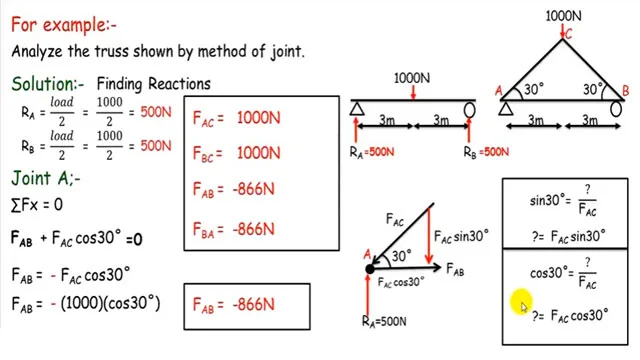Truss
A truss is one of the significant sorts of engineering structures and is specifically used in the design of bridges and buildings. Trusses are designed to support loads, roof, strengthen bridges, or support towers. A truss is exclusively made of long, straight members connected by joints at the end of each member.
In this exclusive tutorial, we will explain how to use the method of joints to calculate the internal member forces in a Truss system or structure. These forces are familiar as Axial Forces and are very useful in truss analysis. The Method of Joints basically involves looking at each of the ‘joints’ (where the members meet) and applying static equations to solve.
Steps To Remember
- Always commence by calculating reactions at supports.
- Select a point with a known force and look at it in isolation.
- Use vector geometry and sum of forces = 0 to solve the other member forces.
- Repetition procedure should be continued until all members are solved.
- Don’t forget to pay attention to Zero Members.
The Necessity of Truss Analysis
If you want to design truss members, and its joints accurately, you should have a basic and clear understanding of what is the load carried by each member of the truss, under a given loading condition. For that particular reason analysis of truss is necessary.
The Analysis Procedure
Video Courtesy: SL Khan

